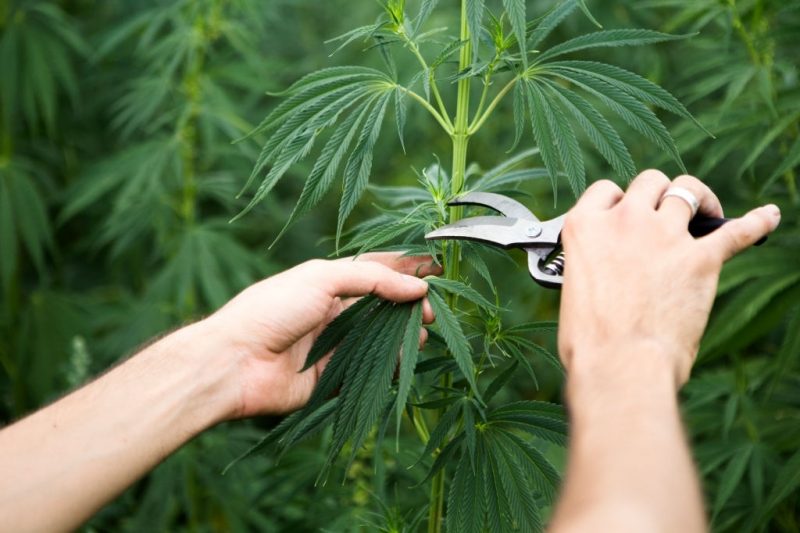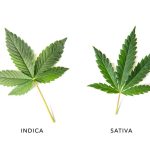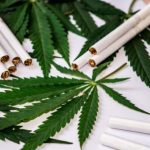🔥 Website for Sale - Contact Us
Growing cannabis requires more than just providing the right nutrients, light, and water to your plants. To truly maximize your yield and ensure the healthiest, most robust plants, pruning and training techniques play a crucial role. Pruning is the selective removal of certain parts of a plant to encourage desired growth patterns, while training refers to guiding the plant’s development in a specific direction. In the world of cannabis cultivation, two popular techniques stand out: topping and fimming.
Topping and fimming are high-stress training methods that involve cutting or pinching the growth tips of cannabis plants. The goal of these techniques is to promote bushier growth, increase the number of colas (flowering sites), and ultimately boost your overall yield.
In this article, we explore the ins and outs of cannabis topping and fimming, including their benefits, potential drawbacks, and best practices.
II. Cannabis Topping
A. Definition and process
Cannabis topping is a high-stress training technique that focuses on controlling the vertical growth and encouraging lateral branching of the plant. The primary objective of topping is to prevent the plant from becoming too tall, create a more even canopy, and boost the overall yield by increasing the number of colas.
The topping process involves carefully cutting the main stem’s growth tip, also known as the apical meristem. By removing the apical meristem, you eliminate the dominance of the main stem and allow the side branches to thrive. This is due to the suppression of the hormone auxin, which is responsible for maintaining apical dominance. Once the apical meristem is removed, the auxin concentration decreases, and the plant redistributes its energy to the lateral branches, promoting bushier growth.
To top a cannabis plant, follow these steps:
- Wait until the plant has at least 3-5 nodes. This ensures that the plant has established a strong root system and can withstand the stress of topping.
- Identify the main stem’s growth tip, which is usually located at the top of the plant.
- Using clean, sharp scissors or a sterile blade, make a clean cut about 1/4 inch above the node where the growth tip is located. Be careful not to damage the surrounding leaves or branches.
- After topping, monitor the plant’s recovery and growth. The side branches will begin to develop more rapidly, and the plant will take on a bushier appearance.
- Remember that topping is a high-stress technique, and your plants will need time to recover. Ensure that your plants are healthy and not experiencing any nutrient deficiencies or other issues before proceeding with topping.
B. Benefits and potential drawbacks
Benefits of topping
Increased yield: By promoting the growth of multiple colas, topping can help increase the overall yield of your cannabis plants. This is because more colas lead to a greater number of flowering sites, resulting in more buds at harvest time.
Improved light distribution: Topping creates a more even canopy, allowing light to penetrate more evenly throughout the plant. This can lead to more consistent growth and a higher-quality harvest.
Controlled height: Topping helps keep plants from growing too tall, which can be advantageous in indoor grow spaces with limited vertical room. It also reduces the risk of plants becoming top-heavy and susceptible to damage.
Enhanced energy distribution: With the main stem’s dominance diminished, the plant will redistribute its energy more evenly across all branches. This can lead to more vigorous and balanced growth overall.
Potential drawbacks of topping
Stress to the plant: Topping is a high-stress technique that can temporarily stunt the growth of your cannabis plants. It’s crucial to ensure that your plants are healthy and robust enough to handle the stress before topping.
Slower recovery time: Depending on the strain and overall health of the plant, recovery time after topping can vary. Some plants may bounce back quickly, while others could take a week or more to resume vigorous growth.
Risk of infection: Cutting the main stem introduces the risk of infection if not done correctly. Make sure to use clean, sterilized tools and avoid damaging nearby leaves and branches to minimize this risk.
Not suitable for all strains: Some cannabis strains may not respond well to topping, particularly those with a shorter flowering time or those more sensitive to stress.
C. How and when to apply topping
Knowing when and how to apply topping to your cannabis plants is crucial for achieving the desired results and minimizing potential risks. Here are guidelines to help you incorporate topping.
Timing: The ideal time to top cannabis is during the vegetative stage when they developed 3-5 nodes. This ensures that the plants have established a strong root system and are robust enough to handle the stress of topping. Topping too early can stunt growth or even kill young plants, while topping too late may not provide enough time for the plant to recover and develop multiple colas before flowering.
Choosing the right location: When topping, it’s essential to cut the main stem’s growth tip about 1/4 inch above the node. This will encourage the growth of two new main colas from the remaining node. Be sure to avoid damaging any surrounding leaves or branches.
Using clean tools: Always use sterilized, sharp scissors or a razor blade to make a clean, precise cut with minimum damage.
Monitor plant health: Keep a close eye on your plants after topping to ensure they recover well and resume healthy growth. Provide proper nutrients, light, and water to support their recovery.
Multiple topping sessions: You can top your cannabis plants multiple times to create an even bushier canopy and more colas. However, it’s essential to give the plants enough time to recover between topping sessions. Ideally, wait at least two weeks before topping again to avoid overstressing the plants.
Strain considerations: Remember that not all cannabis strains respond well to topping. Before applying this technique, research the specific needs of your chosen strain and consider its growth patterns, flowering time, and sensitivity to stress. Some strains, particularly those with shorter flowering times, may not benefit from topping as much as others.
By carefully considering these factors, you’ll be able to implement topping effectively and safely in your cannabis grow, leading to increased yields, a more manageable plant height, and an improved distribution of light and energy throughout the canopy.
III. Cannabis Fimming
A. Definition and process
Cannabis fimming is another high-stress training technique used to manipulate plant growth and encourage lateral branching, similar to topping. The term “fimming” is an acronym for “F**k, I Missed!”, referring to the less precise nature of the technique compared to topping. Instead of completely removing the main stem’s growth tip, fimming involves pinching or cutting only a portion of the apical meristem. This approach results in even bushier growth and potentially more colas, as the plant redirects its energy to multiple growth points.
The fimming process can be performed using the following steps:
- Wait until the plant has at least 3-5 nodes, just like with topping. This ensures that the plant is strong enough to handle the stress of dimming.
- Identify the main stem’s growth tip, which is usually located at the top of the plant.
- Using clean, sharp scissors, a sterile blade, or even your fingernails, pinch or cut about 75-80% of the growth tip, leaving a small portion intact. The goal is to remove most of the apical meristem without completely severing it.
- After fimming, monitor the plant’s recovery and growth. Multiple new growth tips will emerge from the fimmed area, leading to bushier growth and potentially more colas.
- Fimming is considered a slightly more forgiving technique than topping, especially for beginners, as it does not involve completely removing the growth tip. However, it still induces stress on the plant, so ensuring proper care and attention is crucial for a successful outcome.
B. Benefits and potential drawbacks
Fimming, like topping, offers a range of benefits for cannabis growers, but it also comes with its own set of potential drawbacks. Understanding both the advantages and challenges of fimming can help you decide if it’s the right technique for your grow.
Benefits of fimming
Increased yield: Fimming can result in even more colas than topping, as multiple growth tips emerge from the fimmed area. More colas translate to a greater number of flowering sites and potentially higher yields at harvest time.
Bushier growth: Fimming encourages bushier growth, creating a fuller canopy and allowing for better light penetration to lower branches. This can result in more consistent growth and higher-quality buds.
Controlled height: Similar to topping, fimming helps control the height of cannabis plants, making it an excellent option for indoor growers with limited vertical space.
Forgiving for beginners: Since fimming doesn’t involve completely removing the growth tip, it’s considered a more forgiving technique for beginners. If the fimming process isn’t done perfectly, the plant can still recover and continue growing.
Potential drawbacks of fimming
Stress to the plant: Like topping, fimming is a high-stress technique that can temporarily stunt growth. It’s important to ensure that your plants are healthy and strong enough to handle the stress before attempting fimming.
Inconsistent results: Due to the less precise nature of fimming, the results can be somewhat inconsistent. Some plants may respond very well, while others may not develop as many new growth tips as expected.
Slower recovery time: Recovery time after fimming can vary, and some plants may take a week or more to resume vigorous growth. It’s essential to monitor the plant’s recovery and provide the necessary care during this time.
Risk of infection: While fimming carries a lower risk of infection than topping, it’s still essential to use clean, sterilized tools and avoid damaging the surrounding leaves and branches to minimize the risk.
Not suitable for all strains: As with topping, some cannabis strains may not respond well to fimming, particularly those with shorter flowering times or those more sensitive to stress. Research your chosen strain’s specific needs before deciding to apply the fimming technique.
By weighing the benefits and potential drawbacks of fimming, you can determine if this technique is right for your cannabis grow and how to incorporate it effectively to enhance your yield and plant health.
C. How and when to apply fimming
Successfully applying fimming to your cannabis plants requires careful timing and proper technique.
Timing: As with topping, the best time to apply fimming is during the vegetative stage when the plant has at least 3-5 nodes. This ensures that the plant is strong enough to handle the stress of fimming and provides enough time for it to recover and develop multiple colas before the flowering stage.
Choosing the right location: When fimming, you should aim to pinch or cut about 75-80% of the growth tip, leaving a small portion intact. This allows multiple new growth tips to emerge from the fimmed area, leading to bushier growth and potentially more colas.
Using clean tools: Always use clean, sharp scissors, a sterile blade, or even your fingernails when fimming to minimize the risk of infection. Make sure not to damage any surrounding leaves or branches.
Monitor plant health: Keep a close eye on your plants after fimming to ensure they recover well and resume healthy growth.
Multiple fimming sessions: You can fim your cannabis plants multiple times to create an even bushier canopy and more colas. However, it’s essential to give the plants enough time to recover between fimming sessions. Ideally, wait at least two weeks before fimming again to avoid overstressing the plants.
Strain considerations: Remember that not all cannabis strains respond well to fimming. Before applying this technique, research the specific needs of your chosen strain and consider its growth patterns, flowering time, and sensitivity to stress. Some strains, particularly those with shorter flowering times, may not benefit from fimming as much as others.
By following these guidelines, you can effectively incorporate fimming into your cannabis grow, resulting in bushier plants, a more even canopy, and potentially higher yields at harvest time.
IV. Comparing Topping and Fimming
When deciding between topping and fimming as pruning techniques for your cannabis grow, it’s essential to understand the key differences, similarities, and the unique benefits of each method.
A. Similarities between topping and fimming
Both techniques are high-stress training methods that involve cutting or pinching the growth tips of cannabis plants.
Both methods aim to promote bushier growth, increase the number of colas, and ultimately boost overall yield.
Both topping and fimming are best performed during the vegetative stage when the plant has at least 3-5 nodes.
Both techniques help control plant height and create a more even canopy for improved light distribution.
B. Differences between topping and fimming
Precision: Topping involves a clean, precise cut that removes the entire growth tip, while fimming is a less precise technique where only a portion of the growth tip is removed.
Number of colas: Topping generally results in two new main colas, whereas fimming can lead to multiple new growth tips, potentially resulting in more colas.
Recovery time: Recovery time after topping or fimming can vary, but fimming is generally considered a slightly more forgiving technique, especially for beginners.
Consistency: Topping typically yields more consistent results, while fimming can produce more varied outcomes due to the less precise nature of the technique.
C. Choosing the right technique for your grow
When deciding between topping and fimming, consider the following factors.
Experience level: If you are a beginner, fimming may be a more forgiving option, while experienced growers may prefer the consistency and precision of topping.
Desired outcomes: If you want to maximize the number of colas and are willing to accept potential variability in results, fimming might be the better choice. However, if you prefer a more controlled and consistent outcome, topping may be a better fit.
Strain considerations: Research the specific needs and characteristics of your chosen cannabis strain to determine which technique is most suitable. Some strains may respond better to one method over the other.
By comparing the key aspects of topping and fimming, you can make an informed decision about which pruning technique is the best fit for your cannabis grow, helping you achieve your desired results and optimize your plants’ health and yield.
D. Common Questions and Answers
What is cannabis topping?
- Answer: Cannabis topping is a high-stress training technique that involves cutting the main stem’s growth tip, encouraging the plant to grow multiple colas and promoting bushier growth.
What is cannabis fimming?
- Answer: Fimming (short for “F**k, I Missed!”) is a similar pruning method to topping, but instead of completely removing the growth tip, it involves pinching or cutting only a portion of it, leading to even bushier growth and potentially more colas.
How do topping and fimming affect plant growth?
- Answer: Both topping and fimming promote lateral growth, reducing the plant’s overall height and encouraging the development of multiple colas, which can increase the overall yield.
When should I use topping or fimming in my cannabis grow?
- Answer: The ideal time to apply topping or fimming is during the vegetative stage, when the plant has at least 3-5 nodes. This allows enough time for the plant to recover and adapt to its new growth pattern.
Which technique is better for beginners: topping or fimming?
- Answer: Fimming is generally considered a more forgiving technique for beginners, as it doesn’t involve removing the entire growth tip. However, both techniques can be successful with proper care and attention.
Can I use both topping and fimming on the same plant?
- Answer: Yes, growers can combine topping and fimming to maximize the desired effects. It’s essential to allow enough recovery time between pruning sessions to avoid stressing the plant too much.
V. Combining Topping and Fimming
For some cannabis growers, the decision between topping and fimming doesn’t have to be an either/or choice. Combining both techniques allows you to take advantage of the strengths of each method while minimizing potential drawbacks.
A. Benefits of combining topping and fimming
Customized canopy: By utilizing both topping and fimming, you can create a more customized canopy structure that suits your grow space and lighting conditions.
Increased yield potential: Combining the two techniques can maximize the number of colas and flowering sites on your plants, potentially leading to even higher yields than using one method alone.
Greater control over plant growth: Using both topping and fimming provides more opportunities to shape and control the growth of your cannabis plants.
B. How to combine topping and fimming
Start with topping: Begin by topping your cannabis plants during the vegetative stage, when they have at least 3-5 nodes. This will create two new main colas and encourage lateral branching.
Allow recovery time: Give your plants time to recover and resume vigorous growth after topping.
Apply fimming: Once your plants have recovered from topping and developed additional nodes, apply fimming to the new growth tips. This will encourage even more colas to develop and further increase the bushiness of the canopy.
Repeat as needed: Depending on your desired canopy structure and the characteristics of your cannabis strain, you may choose to apply additional topping or fimming sessions. Be sure to allow adequate recovery time between each session to avoid overstressing the plants.
C. Considerations when combining techniques
Strain sensitivity: Keep in mind that some cannabis strains are more sensitive to high-stress training techniques than others. Research your chosen strain’s specific needs and characteristics to ensure it can handle the stress of both topping and fimming.
Monitor plant health: Combining topping and fimming places additional stress on your plants. It’s crucial to closely monitor their health and provide the necessary care and attention to support their recovery and growth.
Recovery time: Ensure your plants have sufficient time to recover between topping and fimming sessions. Overstressing the plants can lead to stunted growth, reduced yields, or other health issues.
By combining topping and fimming, you can create a more customized approach to pruning cannabis, achieving the desired canopy structure and maximizing yield potential.
VI. Conclusion
Topping and fimming are two high-stress pruning techniques that can significantly improve the growth, yield, and overall health of your cannabis plants. While topping provides more consistent results and precise control, fimming can lead to bushier growth and potentially more colas.
For some growers, combining both topping and fimming can offer the best of both worlds, allowing for a customized canopy structure, increased yield potential, and greater control over plant growth. When focusing on pruning to increase yield, it’s crucial to take into account the unique needs and attributes of the specific cannabis strain.





